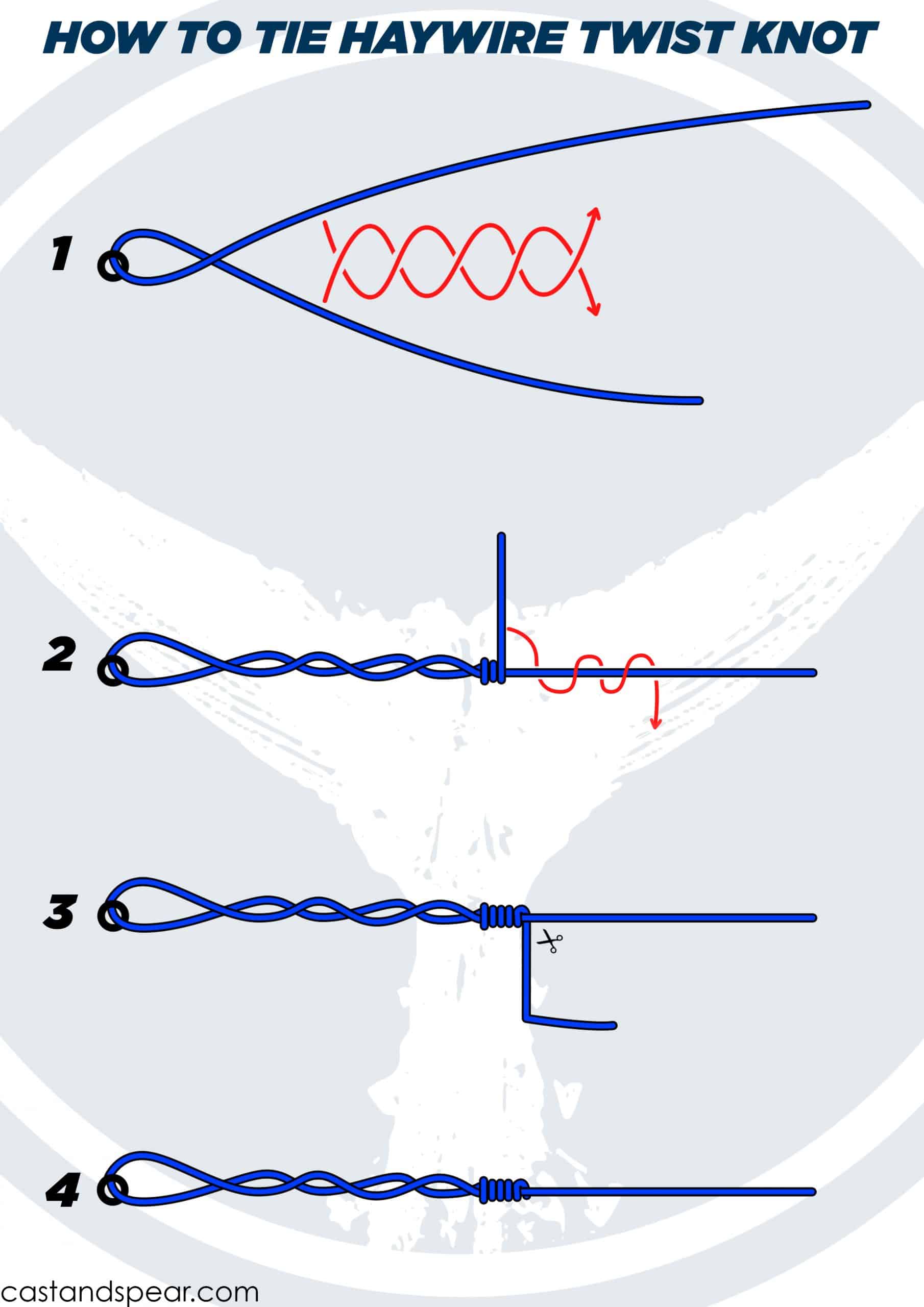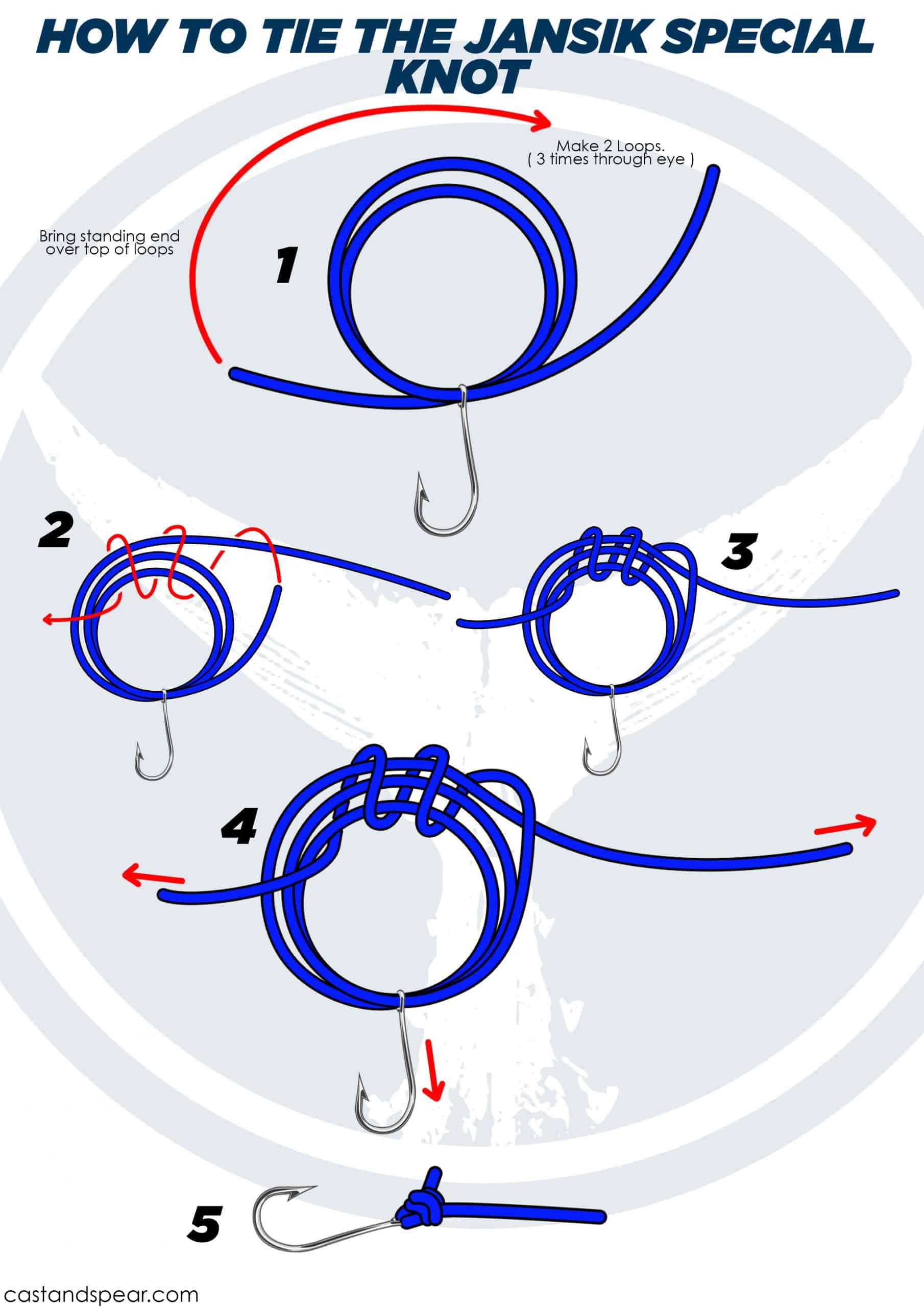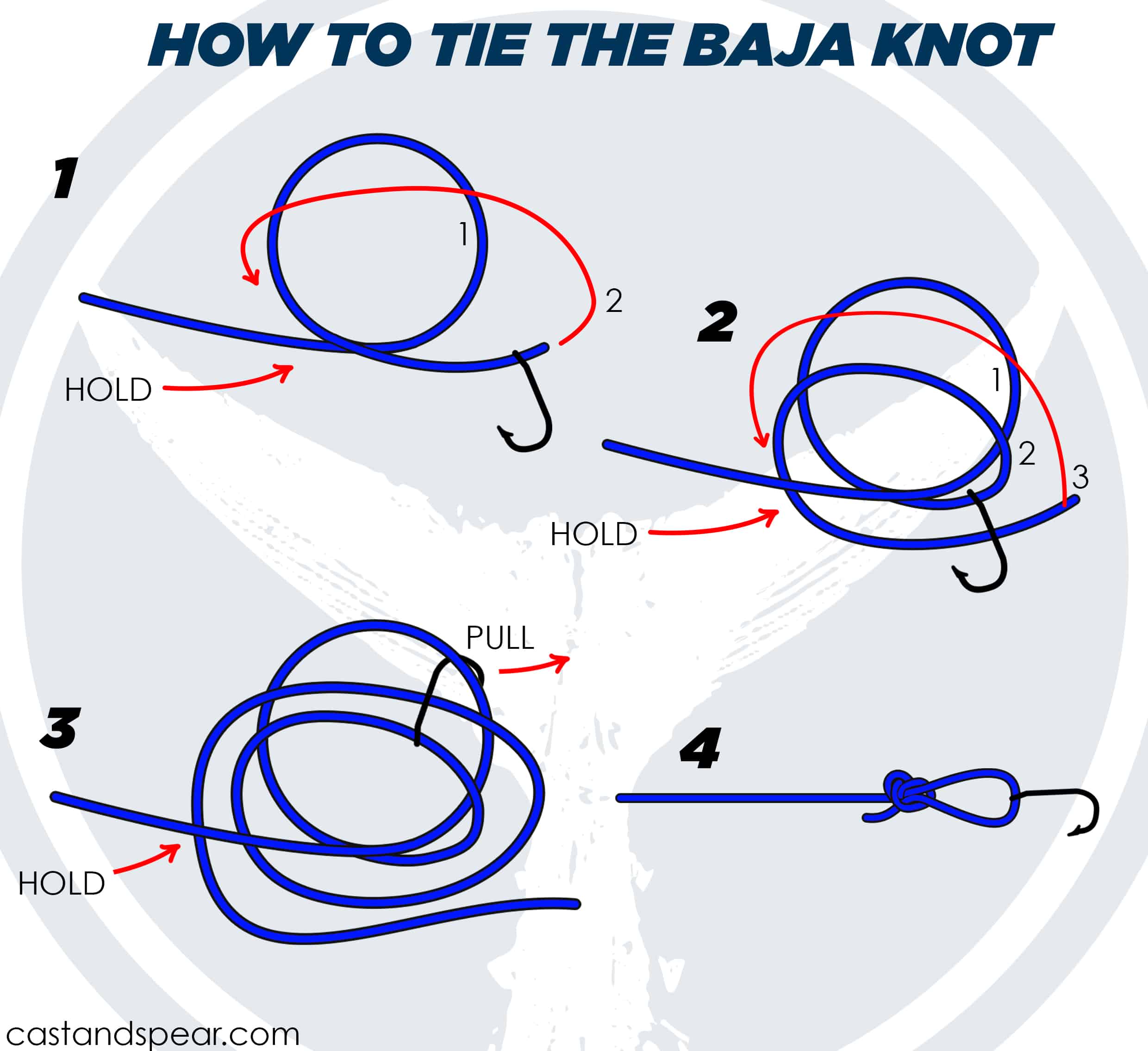Also known as a Gryp and Tube knot, the Nail Knot has stood the test of time. It makes a good fly line to leader knot.
It’s also perfect for joining two lines that are of different diameters together so that you can affix backing to a fly line or the tippet. The name of this fishing knot comes from the nail or needle used to makes tying it easier.
Nail Knot Tying Instructions
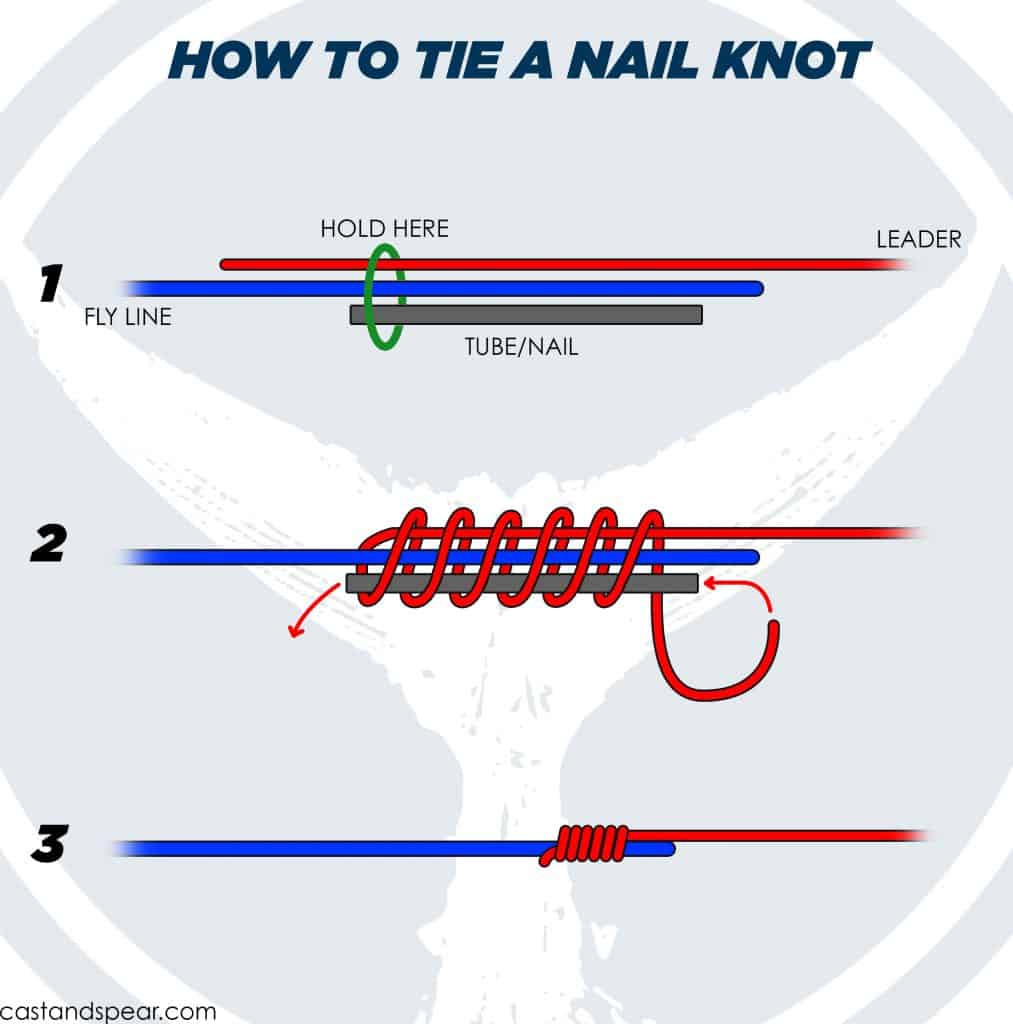
Learning how to tie a nail knot should be your priority as an angler. Follow these steps to make a nail knot you can use for fly fishing and how you can close it neatly:
- Take a nail or a narrow hollow tube as your nail knot tool and align it against the end of a fly line.
- Place the butt section of the leader against the line and the tube, but make sure that you have at least 10 inches of line left at the tag end to make the nail knot.
- Make six wraps or eight wraps around the leader line and tube/nail and pass the tag end through the gap that the nail makes as you wrap.
- Tighten the knot by giving each end of the leader a pull individually while holding the knot in place.
- Close the nail knot by cutting off the excess line at the tag end.
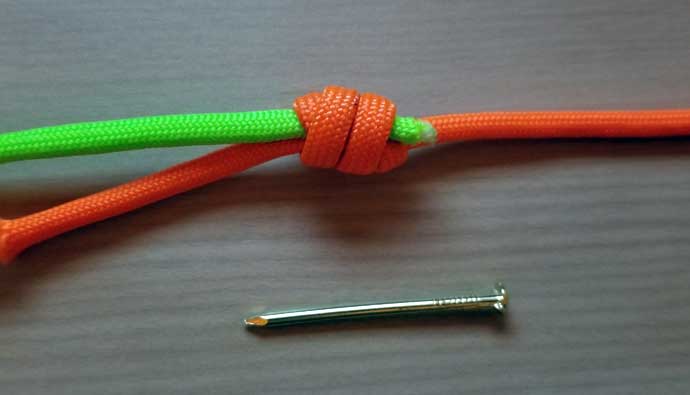

Uses
- The nail knot can attach a leader to a fly line and for attaching a fly line to backing for fly fishing
- This fishing knot can also work as a bobber stop.
- Use the nail knot to tie a braided or monoline to a tippet when you are carp fishing.
- It’s slim enough to work on a swivel or hook.
- The nail knot can be used to splice a monofilament tippet into the hollow braid.
Nail Knot Advantages
- It has a firm grip and does not slip.
- This knot is smooth and small enough to pass through guides.
- It does not hold water, which would otherwise create a spray.
- It can be used on fluoro lines and is resistant to hinging.
- Perfect for fly fishing.
Disadvantages
- Like other small fishing knots, these nail knots are difficult to untie. So if you find yourself in low light conditions, replacing the leader may seem like a monumental task.
- These nail knots can snag on the top guide during a catch.
Alternative Knots
- Blood Knot – This one is ideal for tying two lines that have diameters that are almost the same.
- Surgeon’s Knot – Use this one to join a leader to a fly line.
- Loop to Loop – The simple loop to loop is ideal if you want to make a quick connection with fly lines that have welded loops at the end. Use the Perfection Loop to make your loop quickly.
Frequently Asked Questions
Q: What is a nail knot used for?
A: As one of the smallest knots you can use, this one can be used to tie two different diameter lines. This makes it ideal for fly fishing.
Q: What do I do if I don’t have a fishing knot tool to make this knot?
A: All you need is a bodkin or something similar, and you can make this knot.
Q: How can I increase my chances of making a good nail knot?
A: If you are fly fishing, make sure that you position the fly line and the ends of the leader ideally at the beginning, and you will get a good result when you begin to tie it.
Q: What are the best nail knot tools I can use?
A: A nail, needle, bodkin, and even a hollow tube will work. Just make sure that you pull the line at both ends at the end to make the setup function.




 Facebook
Facebook YouTube
YouTube